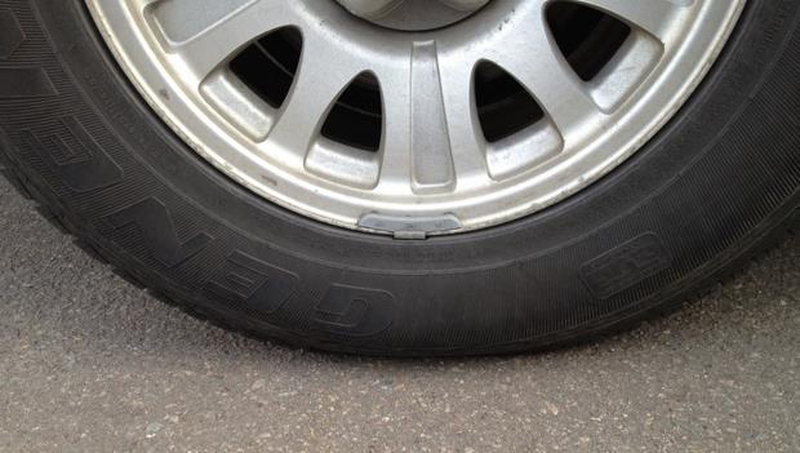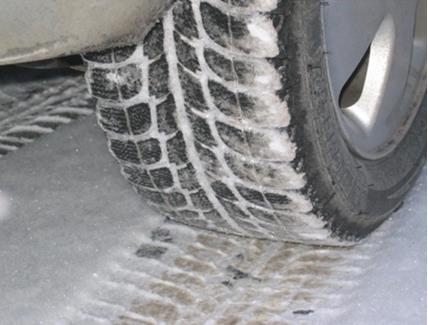Normally durability of different brand of tires depend upon many factors like vehicle, driver, road and frequency of travel. One essential thing for safety of vehicle and durability of tires is to keep an appropriate level of car tire pressure. A low air pressure not only decrease the life of tire but can cause serious consequences. A low car tire pressure may cause an accident, additional wear and tear of tire and extra use of gasoline. How to check tire pressure and add how to put air in tires is an essential skill for every driver.
Commonly a simple method of adding air to car tires is followed. That is to place the tire gauge over valve stem of tire and press it firmly to set over valve. It's necessary to prevent any air escape during putting air into tire. Read the gauge and it will tell about existing car tire pressure. Then place the air hose nozzle over the valve and firmly adjust it over valve stem of tire. Let the burst of air go into the tire and remove it when burst complete. Then check the air pressure again with gauge. If the air is exceeding the required amount of air, remove extra air. Better not to exceed more than 5 PSI than recommended in vehicle owner's manual.
A gauge make the process simple to put air in a tire. It is also a safe way to get accuracy. But how to put air in tires if we don't have a gauge? This is not recommended to do it always as it can be risky. It can cause tire blow out or increase risk of accidents. Tire pressure gauges are easily available in market. These are also available on gas stations so better to look for a gauge rather than relying on judgments.
There could be exceptional circumstances when someone is in need to put air in tires without having a gauge. So how to check tire pressure and how to put air in tires in such situation? Although there are ways to deal with this situation but according to some people its matter of experience to be able to find accurate level of air pressure inside the tire. Six commonly used methods for how to put air in tires without a gauge are discussed below.

How to Put Air in Tires Without Gauge
Eyeball Method
It is to check the car tire pressure by just watching it from a distance. For this purpose vehicle should be on a flat surface like road. After observing the tires from some distance experienced drivers can find the difference of air pressure in tires. However this method is considered riskier than all other methods. First, because it's difficult to observe a difference of 10 to 20 PSI. Second, some radial tires have slight bulge on the side walls of tire so can mislead the judgment. Some people try to inflate tire until bulge disappeared. But here is again a risk of over inflating and again facing a problem of putting right amount of air.
Hand Pressure
For this method of how to check tire pressure, heel of hand is used to push the tire hardly. The rule is if it feels like hitting a rock then there is plenty of air but if it feels like pushing back then there is low pressure. Now how to put air in tires? simple, put air until "feel like rock" level achieved.
Ride-Through-Mud Test
It sounds little funny and long but some people prefer it on eyeball test. For this test mud, ink or any other similar marking substance is applied on tires and then made a mark on ground by little movement of car (make sure to do it on flat surface like road or pavement). Then observe the trail made by tire. This observation will give a comparative result of how much a tire touch the surface. Trail of tire with less air will be different and smudged as compared to other tires. Put some air and test again until required level of car tire pressure is achieved.
Thumb Calibration
It is calibrating the thumb pressure on the good pressure tire and then use this feeling as a standard to check the tire with low pressure and fill low pressure tire. This method is similar to hand pressure.
Weight on the Wheels
Put maximum weight on the tires and tires with low pressure will deform 10 to 20 %. This is a noticeable deformation to give an idea of required air.
Pump-Strokes-Count Method
If anyone don't like to keep a gauge and use it then it's very easy method to answer the question of how to put air in tires without gauge. Make a count one time with a gauge and remember it to use as a standard. For example if 110 psi car tire pressure is required and it is achieved by 200 strokes of pump then one can use these 200 strokes as a standard to fill the tire every time. Please make sure to use this standard as long as vehicle, tires and pump remain the same. Otherwise u need to check again. One more thing to be careful about is what should be the level of air within the tire after which it is filled with 200 strokes of pump.
- Making judgments about how to put air in tires without knowing the existing pressure in tires depends upon many factors like type of vehicle, tires and load on it, volume of pump etc. So one should be aware of all risk factors and have knowledge and experience to make judgments.
- It is safe to put too little than too much air at a time. Tires can explode if extra air is filled in it.
- Before doing any test put the maximum weight that car is carrying on it and if no tire is slack there is no need to fill air. Tire is in the safe zone as long as it is not slack.
- One should have good information about the required air pressure of their tires(often written over tire) and how to put air in tires and how to check car tire pressure. Better to make experiments (like thumb calibration or hand pressure) with "gauge and judgments" before facing a situation to be able to make a rough idea without gauge.
- Better to make more than one tests at a time to avoid any unpleasant situation. People who are often on travel at same vehicle are supposed to make better judgments for how to check pressure and how to put air in tires with appropriate measure.





View All Comments /Add Comment